The ocean is a mysterious and awe-inspiring place, home to a vast array of unique creatures. Among them is the majestic blue lobster, a rare and stunning creature that captivates all who lay eyes upon it.
Contents
While blue lobsters are not a common sight, they can occasionally be found for sale.
These rare creatures offer a unique opportunity to own a piece of the ocean’s hidden treasures, and their striking blue coloration is sure to make a statement in any aquarium.
Key Takeaways:
- Blue lobsters are a rare and stunning creature found in the ocean.
- Occasionally blue lobsters are available for sale.
- Blue lobsters’ striking blue coloration sets them apart from other species.
- Blue lobsters can make a unique and impressive addition to any aquarium.
- Blue lobsters offer a chance to own a piece of the ocean’s hidden treasures.
Blue Lobster Facts and Characteristics
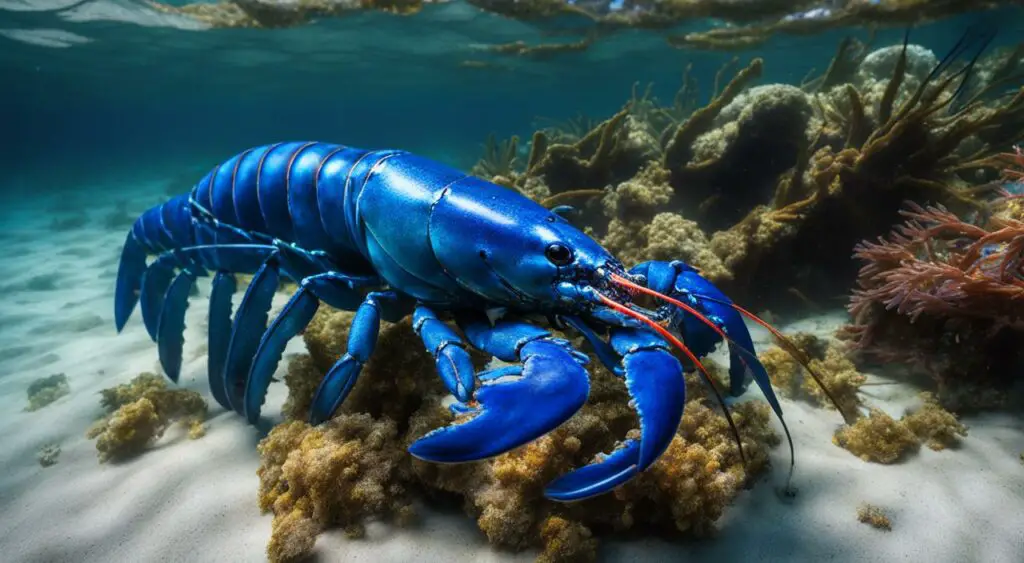
Blue lobsters are a rare sight, and their unique coloring is caused by a genetic anomaly that makes them different from other lobster species.
They are typically found in the western Atlantic Ocean, from Canada to New England, and usually live in rocky crevices or sandy bottoms.
Here are some interesting facts about blue lobsters:
Blue Lobster Species
There are several species of blue lobsters, including the American lobster, which is the most common. Another species is the European lobster, which is also found in the eastern Atlantic Ocean.
Despite their differences, all species of blue lobsters share similar physical traits such as their blue coloration and their characteristic claws.
Blue Lobster Diet
Blue lobsters are omnivores that feed on a variety of foods, including fish, clams, mussels, and other small crustaceans.
They are also known to scavenge for food, eating anything they can find on the ocean floor.
Blue Lobster Habitat
Blue lobsters prefer to live in waters with rocky crevices or sandy bottoms where they can hide during the day and hunt for prey at night.
They typically live at depths ranging from 50 to 300 feet and can be found in both shallow and deep water.
Physical Characteristics of Blue Lobsters
| Physical Traits | Description |
|---|---|
| Size and Weight | Blue lobsters can grow up to 24 inches in length and weigh up to 3 pounds. |
| Coloration | Blue lobsters have a unique blue color that ranges from bright blue to dark navy. Their claws can be a darker shade of blue or even orange. |
| Claws | Blue lobsters have two large claws for hunting and defense. One claw is larger and used for crushing prey, while the other is smaller and used for cutting. |
Molting and Growth Cycle
Blue lobsters, like all lobster species, must molt their exoskeletons in order to grow. During molting, they shed their old shell and grow a new one.
The molting process can take up to several hours, and during this time, the lobster is vulnerable to predators.
Blue lobsters typically reach maturity at around five to seven years old and can live for up to 30 years.
“The blue lobster is a unique and fascinating creature that has captured the attention of marine enthusiasts and scientists alike.”
Caring for Blue Lobsters
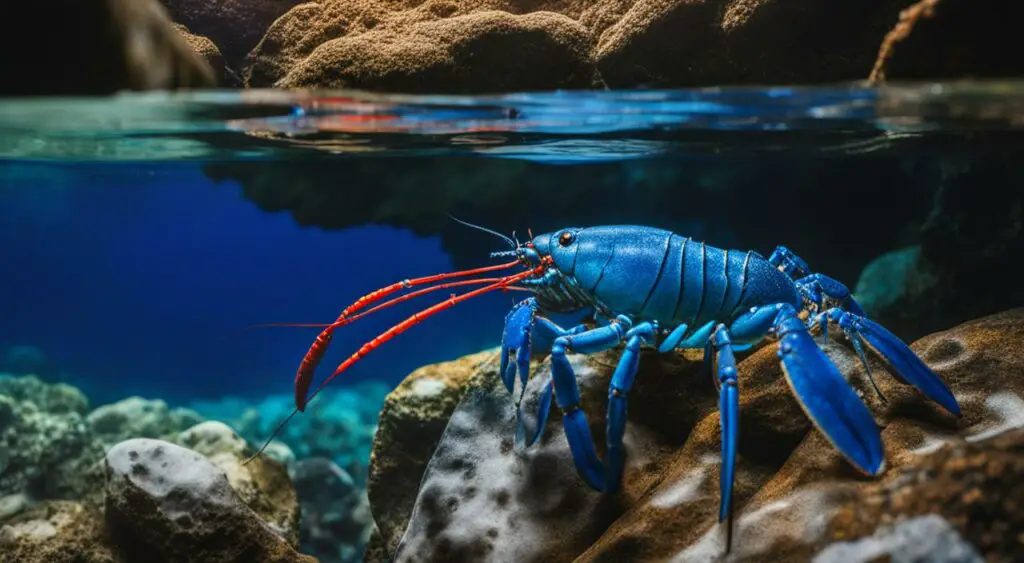
Proper care and maintenance are essential for the health and well-being of blue lobsters. Here are some key factors to consider when caring for these unique creatures.
Blue Lobster Tank
Blue lobsters require a spacious aquarium with a minimum size of 20 gallons.
A larger tank is recommended for multiple lobsters. It is crucial to maintain appropriate water parameters to ensure the health of your lobsters.
The ideal temperature range is between 65-75°F, with a pH level of 7.5 to 8.2.
The water must be adequately filtered and changed regularly to avoid any build-up of waste or harmful bacteria.
Blue Lobster Behavior
Blue lobsters are relatively passive creatures and will often hide during the day, especially in the presence of bright light.
It is essential to provide adequate hiding spots such as rocks or caves in the aquarium. They are also nocturnal and tend to be more active at night.
Feeding Blue Lobsters
Blue lobsters are omnivores and will consume a varied diet of seafood, algae, and vegetables.
A well-balanced diet includes a mix of pellets, flakes, and fresh foods such as shrimp, mussels, and spinach. It is essential to avoid overfeeding, as it can lead to health issues.
Maintaining Blue Lobster Health
Blue lobsters require a healthy environment to thrive. It is important to monitor their behavior and appearance regularly.
Any signs of stress, injury, or illness should be addressed immediately.
Performing regular water changes and maintaining proper water parameters will help prevent health problems.
Blue Lobster Images and Inspiration

Blue lobsters are not only a unique sight to see in the ocean, but they also make for stunning images.
Their vibrant blue coloration is sure to catch the eye of any photography enthusiast. Aside from their beauty, blue lobsters also make for a delicious ingredient in various dishes.
Their tender meat is perfect for soups, stews, and even pasta dishes. Here are some mouth-watering blue lobster dishes:
| Dish | Cuisine |
|---|---|
| Blue Lobster Risotto | Italian |
| Blue Lobster Pho | Vietnamese |
| Blue Lobster Rolls | American |
| Blue Lobster Curry | Indian |
Blue lobster dishes have become a delicacy in many cuisines, and it’s not hard to see why. The unique flavor and beautiful coloration make for a truly special dining experience.
Blue Lobster Lifespan and Reproduction

The blue lobster is a fascinating creature with a unique set of characteristics. In this section, we will delve into its lifespan, reproduction, and molting process.
Blue Lobster Lifespan
The lifespan of a blue lobster is similar to other lobsters, ranging from 30 to 50 years in the wild. However, in captivity, they have been known to live up to 100 years.
Lobster Reproduction
Lobsters reproduce through internal fertilization, with the male transferring sperm to the female using specialized appendages called swimmerets.
The female lobster carries the eggs beneath her tail for approximately 10 to 11 months before releasing them as larvae into the water.
These larvae must fend for themselves, undergoing several molts before developing into adult lobsters.
Lobster Molting
Molting is a crucial part of the lobster’s life cycle, allowing them to grow and shed their old shells.
The molting process involves the lobster’s shell softening and the lobster swelling with water to break free from the old shell.
After shedding the old shell, the lobster will quickly harden its new shell to protect itself from predators.
It is important to note that lobsters are vulnerable during the molting process, as they have not yet hardened their new shell, making them more susceptible to predators.
Additionally, lobsters may not eat much in the days following a molt as their new shell hardens. Understanding blue lobster lifespan, reproduction, and molting is vital for their well-being.
It is crucial to provide them with the right environment and care to ensure their longevity and survival.
Blue Lobster Conservation and Farming
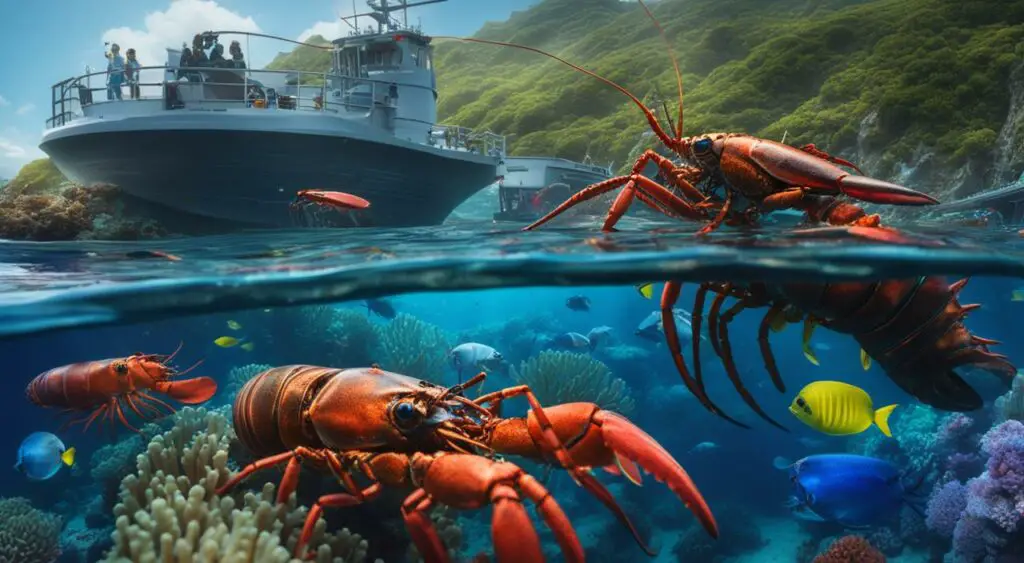
The blue lobster, like many other marine creatures, faces threats to its population due to overfishing, habitat destruction, and pollution.
As a result, conservation efforts have been put in place to protect this unique species. Many lobster fishermen follow strict regulations to ensure the sustainability of the population.
These regulations dictate the size and sex of lobsters that can be caught, as well as the time of year when fishing is allowed.
By following these guidelines, fishermen can prevent overfishing and ensure a robust population for future generations.
Lobster Farming
Another sustainable alternative to wild-caught lobsters is lobster farming.
This method involves breeding lobsters in a controlled environment, allowing for more precise monitoring of population growth and environmental conditions.
Lobster farming can help reduce the strain on wild populations, as well as provide a consistent supply of lobsters for commercial use.
Additionally, farmed lobsters can be raised without the use of hormones or antibiotics, resulting in a healthier and more sustainable food source.
Table: Comparison of Wild-Caught Lobster and Farmed Lobster
| Wild-Caught Lobster | Farmed Lobster | |
|---|---|---|
| Environmental Impact | Can have negative impacts on the ocean ecosystem | More controlled and reduced impact on the environment |
| Sustainability | Variable, depending on fishing practices and regulations | Consistently sustainable |
| Flavor and Texture | Varies based on diet and habitat | Consistent flavor and texture due to controlled environment |
| Price | Can be more expensive due to limited supply | More affordable due to controlled production |
Overall, lobster farming provides a sustainable and controlled alternative to wild-caught lobsters while maintaining the unique flavor and texture that make them a delicacy.
As awareness of the need for conservation efforts grows, the demand for farmed lobsters is likely to increase as well.
Blue Lobster in Culinary Delicacies
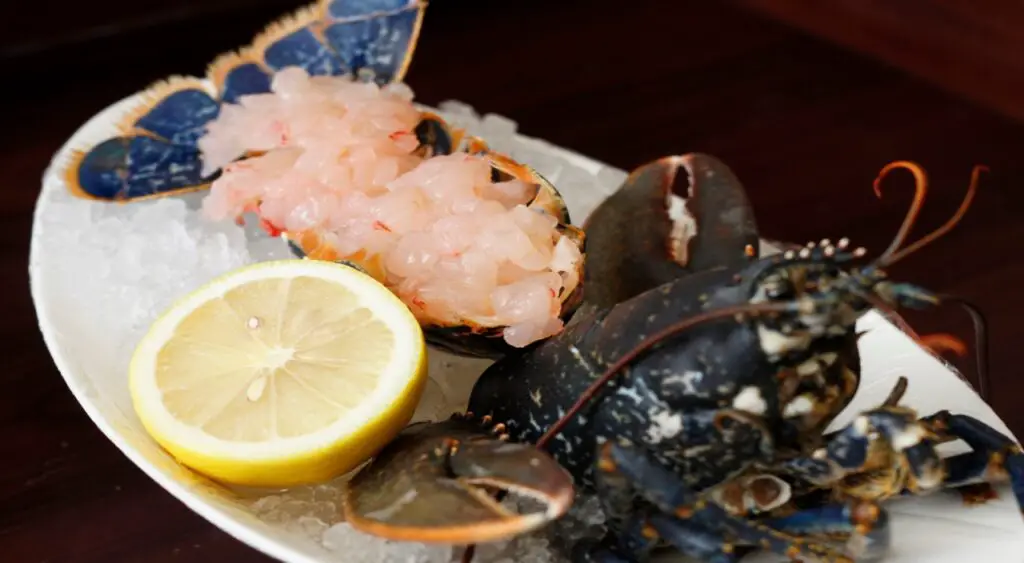
The blue lobster’s unique flavor and stunning coloration make it a sought-after ingredient in many cuisines.
Cooking with lobster requires some skill, but the result is usually worth the effort.
In this section, we will explore various techniques, recipes, and popular dishes that highlight the blue lobster’s delicate taste.
Lobster Cooking Techniques
Cooking lobster properly is essential to fully appreciate its flavor. There are several methods to prepare blue lobster, including:
- Boiling: The most traditional method of cooking lobster, boiling requires placing the lobster in a pot of well-seasoned water and cooking it for several minutes, depending on the size.
- Steaming: A gentler way to cook lobster, steaming involves placing the lobster in a steamer basket over boiling water and cooking it for several minutes.
- Grilling: Grilling is an excellent method to bring out the lobster’s natural flavor. Split the lobster in half, brush it with garlic butter, and grill it on medium heat for several minutes.
Lobster Recipes and Dishes
There are several classic blue lobster dishes, including:
| Dish | Description |
|---|---|
| Lobster Bisque | A creamy soup made with lobster stock, cream, and diced lobster meat. Often served as a starter. |
| Lobster Roll | A sandwich made with a buttered and toasted hot dog bun, filled with chilled lobster meat mixed with mayonnaise, lemon juice, and chives. |
| Lobster Thermidor | A French dish made by sautéing lobster meat with shallots, white wine, and cognac, then mixing it with a creamy mustard sauce and grated cheese and baking it in a lobster shell. |
Blue lobster is also an excellent addition to pasta dishes, salads, and risottos. Its tender meat pairs well with butter, lemon, garlic, and white wine.
Blue Lobster as a Delicacy
Due to its rarity and unique flavor, blue lobster has become a delicacy in many cuisines worldwide.
The price of blue lobster can vary significantly, with some species being more expensive than others.
In some cultures, blue lobster is a sign of luxury and wealth, and its consumption is associated with special occasions and celebrations.
“The blue lobster is a prized ingredient in high-end restaurants and gourmet markets, with chefs featuring it in their menus for its delicate and refined taste.”
Whether cooked simply or in a more elaborate dish, blue lobster continues to fascinate culinary enthusiasts worldwide.
Exploring Blue Lobster in Marine Life
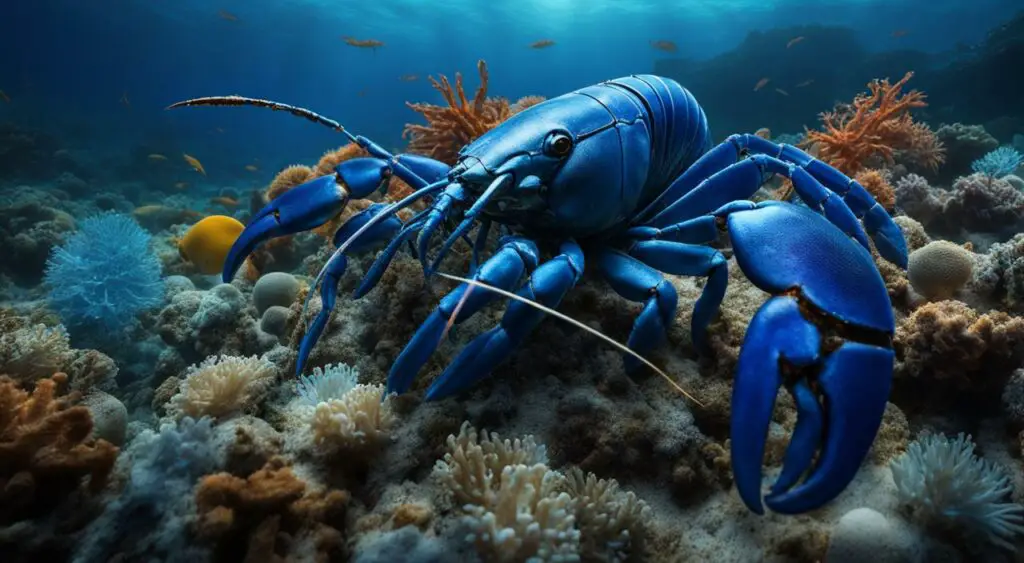
The Blue Lobster is part of the crustacean family, which includes more than 67,000 species. Lobsters are famous for their unique appearance and flavor, and Blue Lobsters are no exception.
Although they are rare, they have become a popular choice for aquarium enthusiasts and seafood lovers alike.
When it comes to marine life, Blue Lobsters play a vital role in the food chain.
As predators, they feed on smaller crustaceans, mollusks, and other small marine animals. They are also preyed upon by larger marine predators such as octopuses, sharks, and rays.
“Blue Lobsters are a prime example of how beautiful and fascinating marine life can be.”
Blue Lobsters are found in various oceans around the world, including the Atlantic, Pacific, and Indian Oceans.
They prefer to live in rocky areas with plenty of hiding places, such as crevices and caves, to keep themselves safe from predators.
As mentioned earlier, Blue Lobsters have become popular in the aquarium trade due to their unique coloration.
They are excellent additions to any tank, providing a visually striking centerpiece that is sure to draw attention.
However, it is essential to ensure that they are provided with the right environment and conditions for their well-being.
Overall, Blue Lobsters are an essential part of the marine ecosystem, and their beauty and uniqueness make them a popular choice for aquarium enthusiasts and seafood lovers alike.
Their vital role in the food chain ensures that they continue to thrive in their natural habitat.
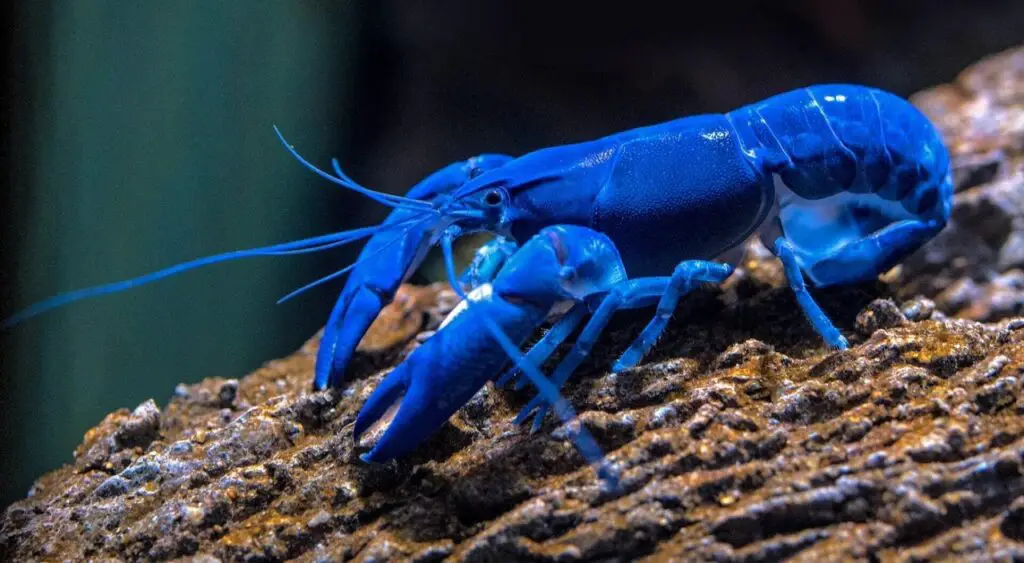
Conclusion
The blue lobster is a fascinating creature that has captured the attention of marine enthusiasts and culinary enthusiasts alike.
Through this article, readers have been introduced to the beauty and rarity of the blue lobster. As well as its unique characteristics, ideal habitat, and proper care requirements.
Additionally, this article has explored the culinary world of blue lobster, from popular dishes to cooking techniques.
And its importance in marine ecosystems as a crustacean species.
It has also highlighted the need for conservation efforts to protect the population of blue lobsters and how lobster farming can provide a sustainable alternative to wild-caught lobsters.
Overall, the blue lobster is a rare and magnificent creature that deserves our admiration and protection.
We hope that this article has shed light on the wonders of the ocean and the hidden treasures that await discovery.
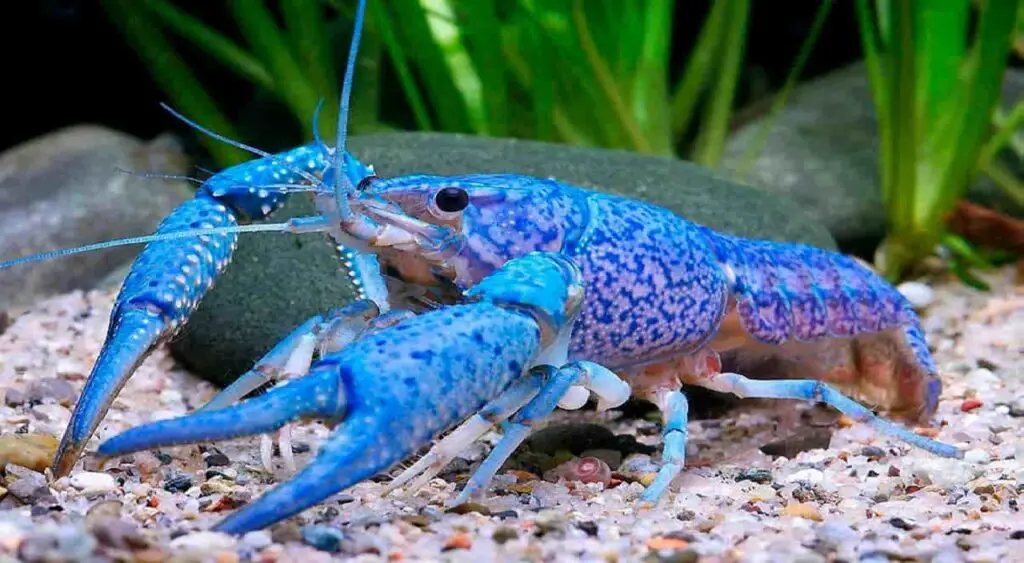
FAQ
1. Can blue lobsters be kept as pets?
Yes, blue lobsters can be kept as pets, but they require special care and a suitable tank setup.
2. How rare are blue lobsters?
Blue lobsters are incredibly rare, with estimates suggesting they occur in only 1 in every 2 million lobsters.
3. Where can I find blue lobsters for sale?
Blue lobsters can occasionally be found for sale at specialized aquarium stores or online through reputable sellers.
4. What is the average lifespan of a blue lobster?
Blue lobsters have a similar lifespan to other lobster species, typically living for around 10 to 15 years.
5. Do blue lobsters taste different from other lobsters?
Blue lobsters have the same delicious flavor as other lobsters and can be enjoyed in various culinary dishes.
6. Can blue lobsters change color?
Blue lobsters cannot change their color, as the blue pigmentation is a natural trait they are born with.
7. Are blue lobsters more aggressive than other lobster species?
Blue lobsters exhibit similar behavior and aggression levels to other lobster species and should be housed with caution.
8.How often do blue lobsters molt?
Blue lobsters molt, or shed their exoskeleton, around once a year as they grow larger.
9. Are blue lobsters endangered?
Blue lobsters are not specifically classified as endangered, but their rarity makes them a species of conservation concern.
10. Can blue lobsters be kept in a community tank with other fish?
Blue lobsters generally do not thrive in community tanks with small fish, as they may see them as prey.
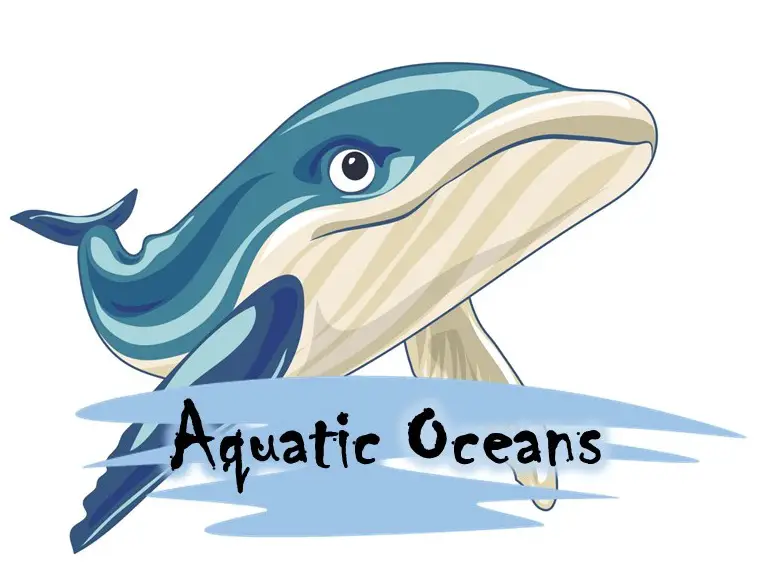

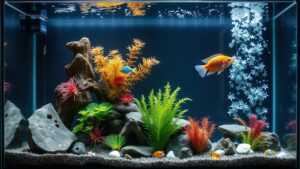

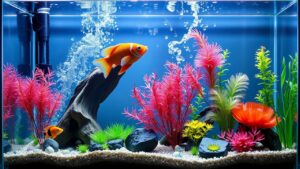

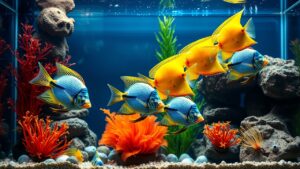


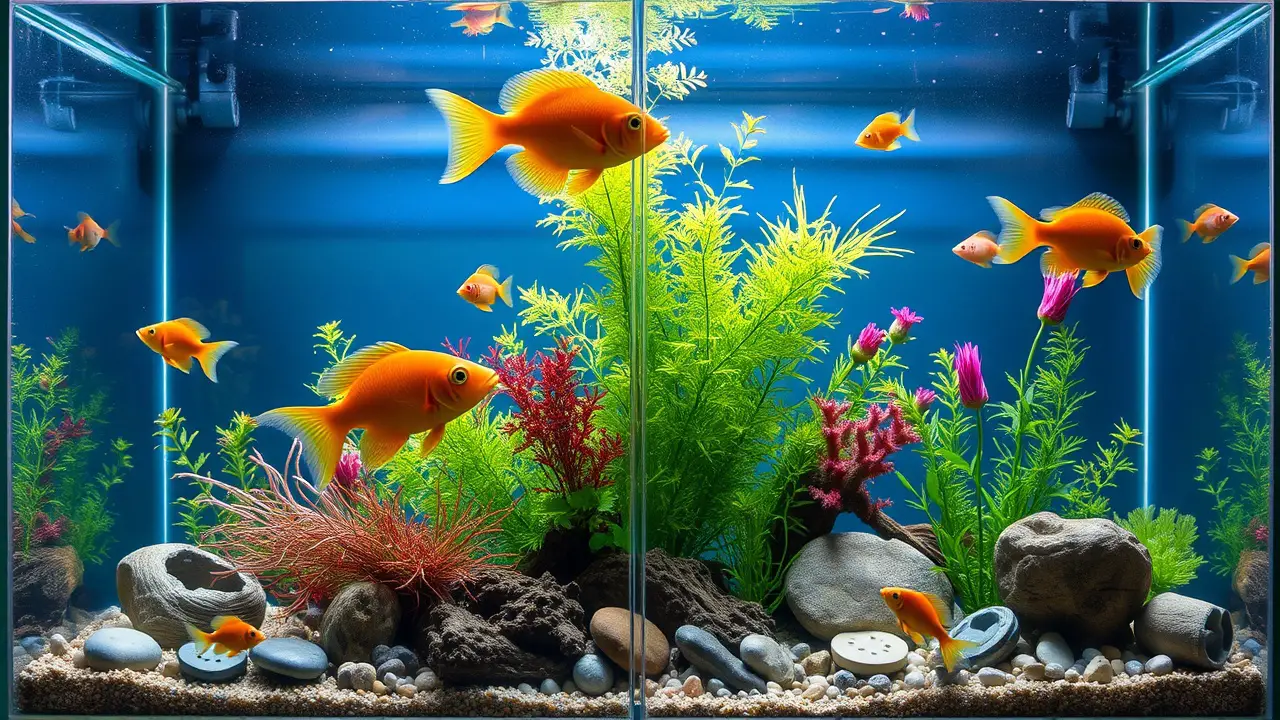

Leave a Reply